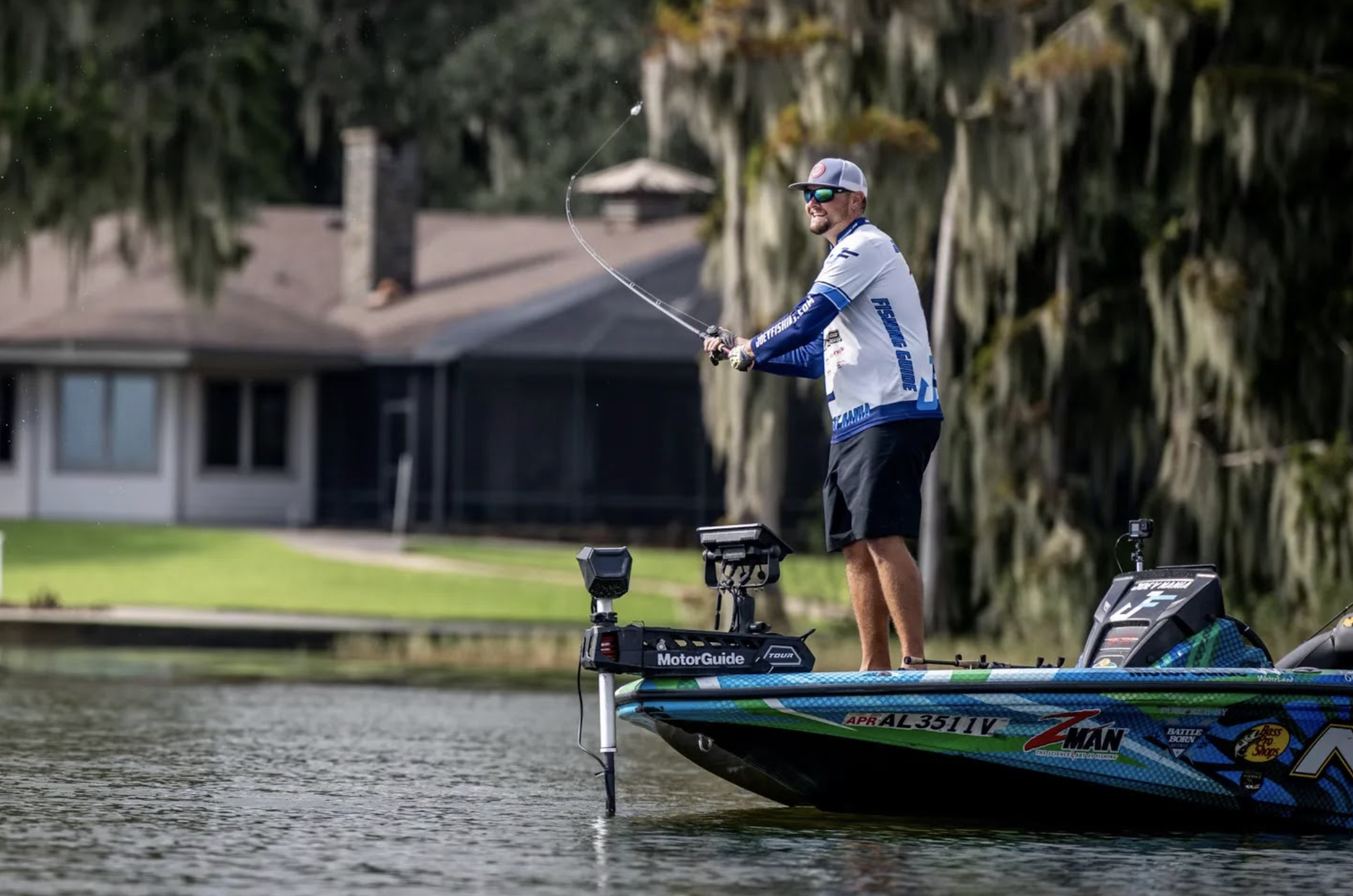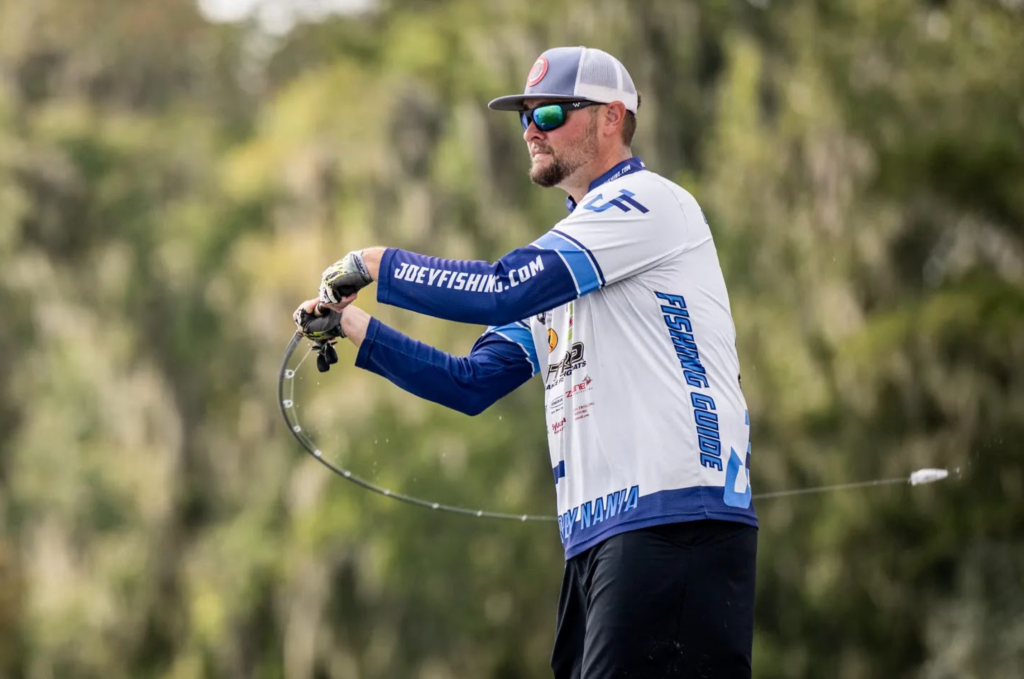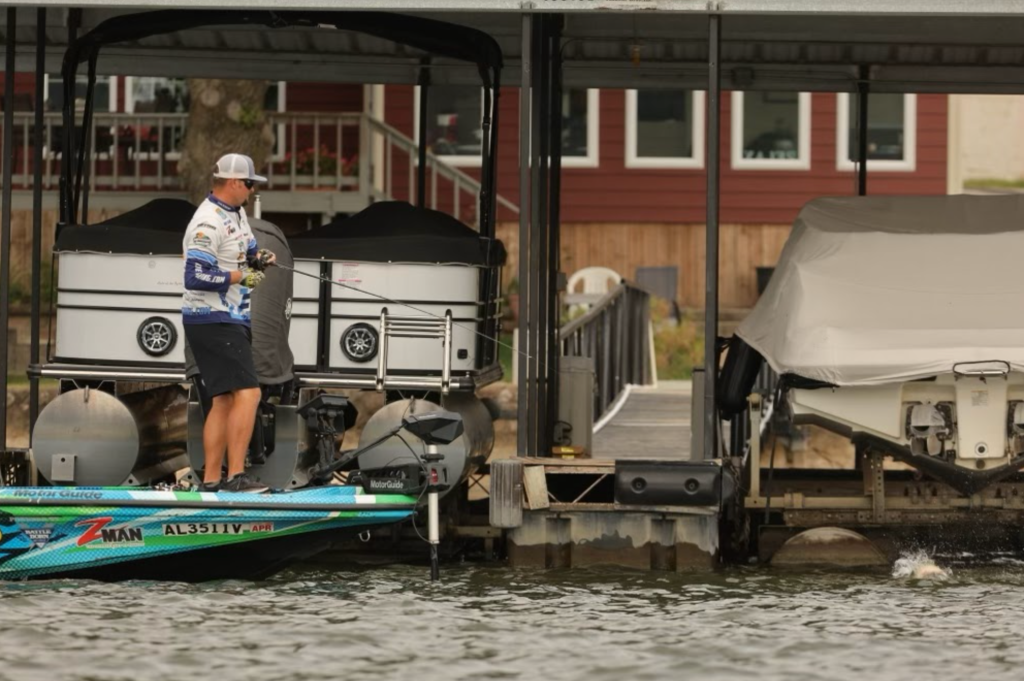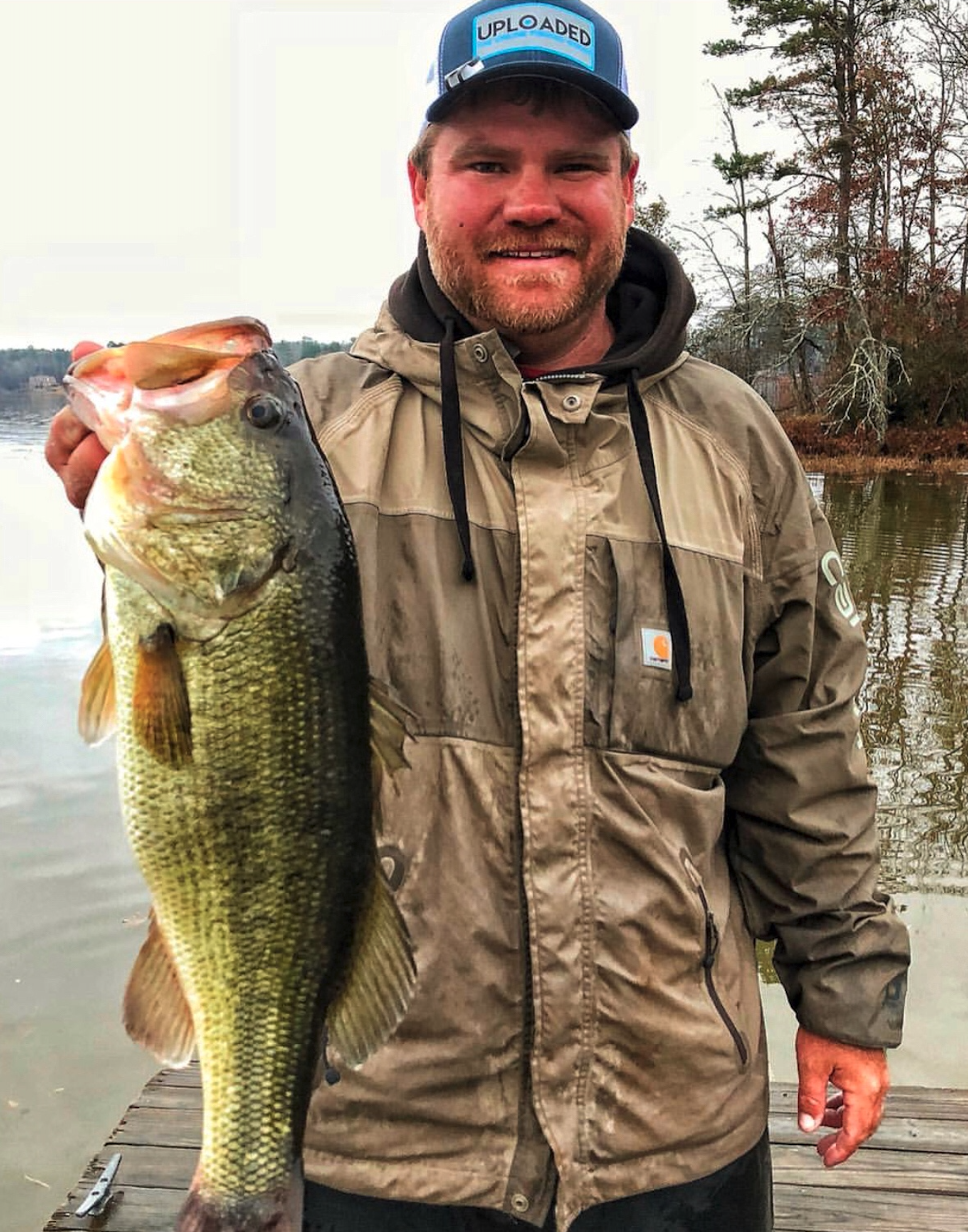
Bassmaster Opens EQ Pro Joey Nania has been fishing competitively nearly all his life. The two-time Opens champion is also a two-time Junior Bassmaster World Champion, having garnered his first two titles before leaving high school. His Open wins are more recent — 2021 on Pickwick Lake in Alabama and 2023 on Oklahoma’s Lake Eufaula.
When it comes to rod selection, Nania knows the importance of having a well-balanced and extensive bass fishing arsenal. So we decided to pick his brain for tips on how to build one for ourselves.
“You look at the deck of my boat and you see 15 different rods,” said Nania. “They all have different backbones and different powers. There are some rods that are super versatile and multipurpose. But fishing rods are tools, and they’re all designed for a different job.”
Thinking along the lines of that analogy, you could undo a few Phillips-head screws with a flat-head screwdriver, but you’re creating a lot more room for error in doing so. From skipping to casting to setting the hook and fighting a fish, bass fishing is all about efficiency. And you can be far more efficient with the right tool for the job in hand.
When thinking through what it takes to effectively fish a drop shot, a deep-diving crankbait or a frog, you can quickly see the need for a variety of rod-and-reel setups. And the bait you’ll be throwing on each rod is really only part of the equation. As different as the techniques are, so are the anglers. The right jerkbait rod for a guy that’s 7-feet tall won’t be the same as a 5-foot lady should use.
“You want to have it fit your body, and you want to be comfortable with it, and you want to have confidence in what you’re using. That’s the biggest key to selecting rods that fit you. And I’m super comfortable with all the different techniques I use. I’ve got the models that fit me the best.”
Where to start
“I really do believe that a rod that’s made for throwing heavier line techniques is really important. You have to have a rod that’s ready to handle anything from 17-pound fluorocarbon up to 25-pound fluorocarbon, that’s also able to handle your heavier braids. And for me that’s the 7-4 Heavy TFO Resolve.”
Nania prefers this heavier-action rod for baits that require an “impact hook set.” Think jigs and frogs, the kind of baits that have bold single hooks that require a stiff and fast hook set. These baits call for a rod that has a strong backbone and a fast tip that is also sensitive.
“You’ve got to have the backbone, but you’ve also still got to have the feel … not a broomstick. A good, balanced, light-weight rod like this that you can fish all the time is really important.”

Winding baits
“For baits that you’re winding, it’s important to have something in that low-7-foot range, like 7 foot, 3 inch to 7 foot, 4 inch. And have it in that medium-heavy class.”
This is the rod Nania picks up when he wants to throw a spinnerbait, squarebill or ChatterBait.
“That’s going to be the rod that has a little bit more bend and give so that when a fish eats it they’re going to get it a little better. You’re just doing more of a pull set on them; you’re not cracking the hook set.”
Braid rods
As Nania said earlier, he likes the 7-foot, 4-inch Heavy TFO Resolve for a lot of his braided line applications, like close-quarter frogging and fishing a swim jig. But there are two braided line situations in particular where he’ll step things up.
“If I’m frogging mats and making long casts, on Guntersville or something like that, I want a 7-6 plus. Something long, so I can get a lot of movement on the line when I’m setting the hook way out there.”
Punching also requires a bigger, beefier rod than other braid applications. The dense, matted vegetation that punching is geared towards requires equally impressive gear.
“For punching, I like a 7-6 extra heavy. Punching is a bass fishing technique that everyone needs to know how to do. Bass just like getting under heavy vegetation, and you need the right equipment to get a bass out of the thick matted area.”
A good all-around spinning rod
“It’s getting more and more popular to use a longer spinning rod. For a long time it was like a 6-6 rod was the normal for a spinning rod. Then it stepped up to 7-foot ones. I’ve gone up to where I’m using a 7-3 medium-light plus a lot now.”
Nania said the 7-foot, 3-inch Medium Light Resolve is probably what most rod companies would rate as a 7-3 medium-action spinning rod. He’s moved to a longer rod over time because it makes him a more effective angler with the majority of the finesse presentations he relies on.
“Having that extra length on a spinning rod is really beneficial. You get better casting out of it, your hook set is a little bit better and you don’t lose any sensitivity or feel having a little bit longer spinning rod.”
“With a spinning rod, it’s all about feel. So you want to have a good quality, lightweight rod that’s not insensitive. The 7-3 Resolve is super well balanced, and that’s the key for feeling the bites and catching those fish.”

Jerkbait rod
There are a few situations in bass fishing where the need for a technique-specific rod is particularly important. We already touched on one such instance when talking about punching. Jerkbait fishing is another.
“You want to have something that’s not tiring, and you want to have a good lightweight rod. That’s because you’re working the bait with a lot of wrist action. I prefer a 7-foot medium. That’s the shortest baitcaster I’ll throw all year long.”
At 6 foot, 2 inches tall, Nania acknowledged that a 7-footer might be a little long for anglers that come in shy of 6 feet. He said you could get used to fishing a jerkbait on a 7-foot rod, but he stressed the importance again of making sure you pick a rod that fits you.
“The 7-foot Medium TFO is a rod that I’m very, very comfortable with. I can twitch and rip that bait all day and not wear my wrist out. You go out there and jerkbait with a 7-4 medium heavy or the wrong rod and you’re going to know right away.”
Sensitivity is also key for jerkbait fishing according to Nania, needing to know by the feel what the bait is doing at all times. And the right rod action is paramount here for another reason as well.
“One of the most important aspects of jerkbait fishing is when you snap that rod down and pop it, you want to pop it on a slack line and then let it bounce back to slack, so that you get that reverberation through the bait.”
“And when you have a short rod that’s super sensitive and has a quick tip, it makes it so that you can really work the bait well and let the bait do what it’s supposed to do when it suspends and hovers and wobbles down there.”
Talking briefly through the baitcasting reels that Nania pairs with these rods, he said a SEVIIN GF Series 7.3:1 gear ratio reel is the one he uses with most techniques. He does prefer to flip and throw his topwaters using 8.1:1 gear ratios. For his ChatterBaits and crankbaits, he goes with a slower 6.6:1.





